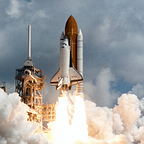The Four Biggest Events in Space Coming This Year
Groundbreaking missions to look forward to
With the new year now upon us, scientists and space enthusiasts alike can look ahead to see what’s in store for the exploration of space this year. There are many large, groundbreaking events planned, covering multiple areas of space science. Undoubtedly 2022 is bound to bring exciting new discoveries to amaze anyone.
1. Deployment of the James Webb Space Telescope
More than thirty years in the making, the James Webb Space Telescope (JWST) will allow scientists to look back at the earliest galaxies formed in the universe. One hundred times more powerful than the iconic Hubble Space Telescope, James Webb can observe stars over 13 billion light years away.
It uses infrared radiation to spot distant stars and galaxies, whose light has taken billions of years to reach us on Earth. This means the telescope is essentially looking back in time, closer to the beginnings of the universe than was ever possible before.
The telescope will also have the capabilities to study exoplanets in the ongoing search for life beyond Earth. It can do this by determining what elements and gases are contained within a planet’s atmosphere. If those match up with common ones associated with life, such as oxygen and methane, then there’s a chance that planet holds life.
2. Launch of Artemis I
The first mission in NASA’s ambitious Artemis program, working to send humans back to the moon, Artemis 1 will be a performance test of the rocket’s technology. Producing almost 9 million pounds of thrust, the ultra-powerful Space Launch System (SLS) is how NASA aims to send the first woman and next man to the moon by 2025.
Aboard the launch system will be the Orion space capsule, where astronauts will one day inhabit during their journey to the moon. As the capsule makes its three week long journey to the moon and back, it will be testing various systems and procedures to make sure everything is safe in preparation for a crewed launch.
However, it’s not just human passengers that the rocket was designed to carry. In the future when a base on the moon may be under construction, the SLS rocket can carry large amounts of necessary cargo such as building materials or crucial supplies for astronauts.
3. ExoMars Rover Launch
Another Mars rover will be on its way to the red planet this year. Developed mainly by the European Space Agency and Russia’s Roscosmos State Corporation, the ExoMars project will see a rover explore the Martian surface, looking for clues to see if life ever inhabited Mars.
The project is a true international collaboration, with the rover being built by Europeans, assisted by a Russian landing device, and equipped with American technology. NASA contributed much of the technical instruments and key components for the rover to effectively detect historic signs of life on Mars.
4. DART Colliding with an Asteroid
In the highly unlikely situation that a large near-Earth asteroid is detected on a path for our home planet, it’s important to have technology known to be effective in eliminating the threat of a possible impact. NASA hopes to test how powerful crashing a small spacecraft into an asteroid can really be. Their Double Asteroid Redirection Test (DART) will collect data on how much a simple spacecraft can impact the overall direction of an asteroid.
In a situation where Earth looked to be on a collision course with a highly dangerous object such as an asteroid, a spacecraft such as DART could be used to ensure proper planetary defense. NASA scientists have of course proposed other options for such a predicament, but most are too complex to build and test at the moment.
Conclusion
There are so many great things in space to be excited about for the new year, many more than are possible to include in a short list like this one. From the Parker Solar Probe continuing to pass close to the sun, to private companies delivering scientific payloads to the moon, there’s a plentiful amount of new and incredibly interesting developments in the space industry. These coming years will likely see a profound interest in space, not matched since the famous Space Race of the 1960s. Whatever the next year holds, it’s sure to capture the imaginations and spark curiosity in the minds of many space enthusiasts.
